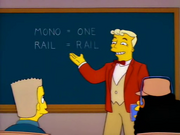ssiguy2
Senior Member
The Canada Line is standard subway/Metro and the capacity issue has nothing to do with the technology and everything to do with the puny station sizes. It is not ICTS/SkyTrain although everyone wishes it was so it would be quieter and faster which SkyTrain definitely is, you can tell the difference.
The Innovia monorail trains are of the same basic design as the SkyTrain and new SkyTrain cars will be able to be 100 meter long multi-articulated trains.
The Innovia monorail trains are of the same basic design as the SkyTrain and new SkyTrain cars will be able to be 100 meter long multi-articulated trains.






